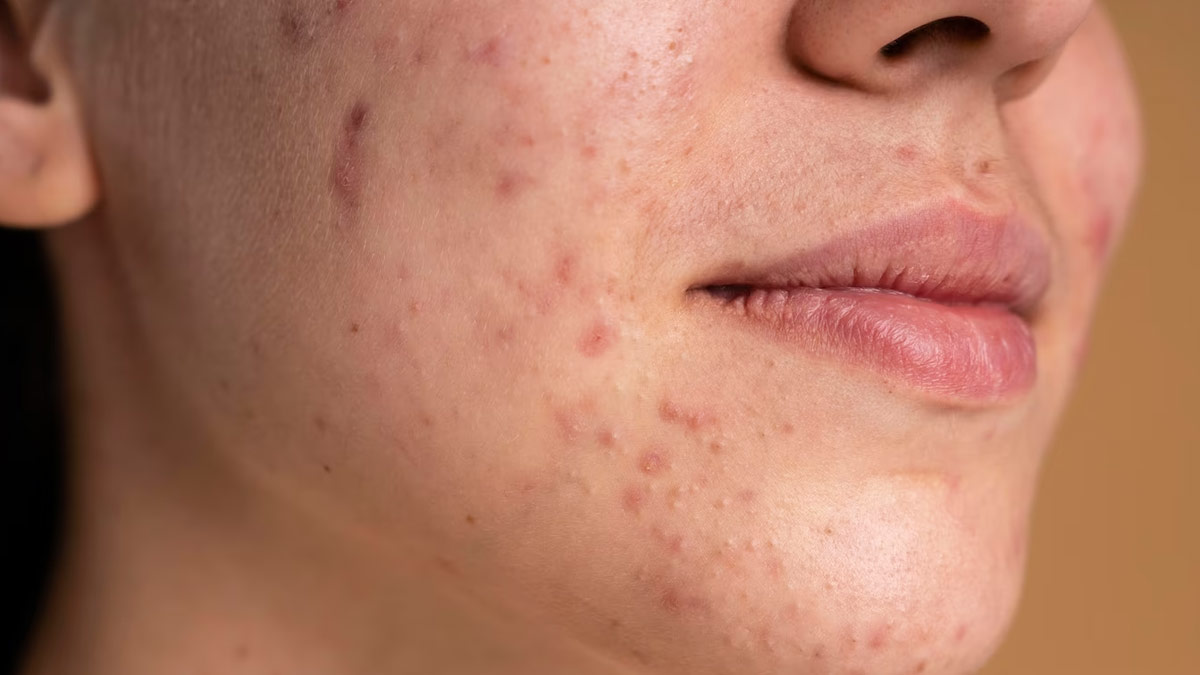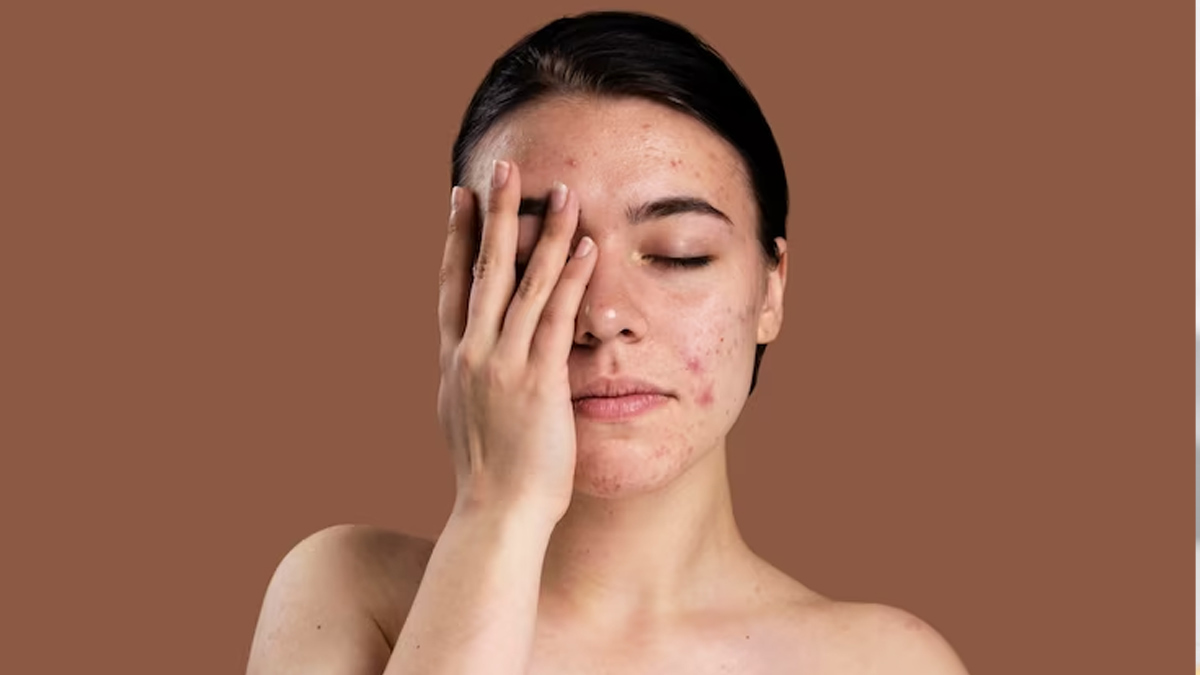
Acne is often thought of as a teenage concern, but many adults continue to struggle with persistent breakouts in their 20s, 30s, and beyond. From stress and hormonal fluctuations to skincare habits and pollution, various factors determine how the skin acts. The question of whether dairy might be triggering or worsening adult acne comes up time and again in the wellness world, as discussions about diet and skin health gain traction.
Table of Content:-
So, we decided to get this question answered from an expert, and reached out to Dr Rashmi Sriram, Dermatologist, Fortis Hospital, Rajaji Nagar, Bengaluru, to take a closer look at how foods like milk, cheese, butter, and yoghurt may impact inflammation and oil production. Read ahead to know everything she shared with us.
How Dairy Affects the Body and Skin
Dairy products contain hormones like androgens and insulin-like growth factor-1 (IGF-1) that may trigger oil glands. “Foods that cause the levels of IGF-1 to be higher can stimulate increased sebum production and clog pores, paving the way for acne,” explained Dr Sriram. Cow’s milk, or skim milk in particular, is viewed as an acne culprit in several observational studies. Experts believe the reason is due to the combination of natural hormones in milk and because it can raise insulin levels.
Also Read: Worrying Why You Acne Wont Go Away? Expert Shares 6 Reasons

While yoghurt and cheese seem to have a weaker link, they still can cause problems in very sensitive individuals. The impact is highly variable between individuals; that is why some adults find a clear relationship between dairy intake and acne breakouts, whereas others do not.
Is Cutting Out Dairy an Effective Acne Strategy?
Eliminating dairy won't work for everyone, but a lot of people can see a real difference in skin clarity within a fortnight of cutting out dairy. "People who breakout mainly around the jawline or chin should pay closer attention to diet, as these areas are often affected by hormonal changes," shared Dr Sriram. As dairy can have an indirect impact on hormone levels, removing or limiting it may help regulate oil production.
For some, it helps to even decrease breakout frequency by changing from normal milk to plant-based options like almond or oat milk. However, dietary changes should not be made on impulse, because completely eliminating a class of food without adequate replacements threatens to create nutritional deficiencies, especially in calcium and vitamin D.
What the Research Says About Dairy Causing Acne
The current evidence does not state that dairy causes acne; however, several studies shed light on an association. Skim milk has the highest association, and this is thought to be due to the processing and hormonal profile of skim milk. High-glycaemic diets, which include sweetened dairy drinks, exacerbate insulin spikes, which can contribute to the formation of acne.
Also Read: Dermat Shares The Best Oil To Apply On Face At Night And Why

However, experts stress that it is multifactorial. Genetics, hormonal conditions such as PCOS, stress, sleep patterns, gut health, and skincare habits are all critical contributors. Dairy might be a piece of the puzzle, but taking care of acne usually requires a holistic approach.
Who May Benefit Most from a Dairy-Free Diet?
Adults with inflammatory acne, dealing with painful pimples, cysts, or deep nodules, will often see improvements once dairy consumption is reduced. If breakouts consistently occur after milk-based drinks, whey protein shakes, or multiple servings of cheese, sensitivity to dairy may be an issue.
Those with hormonal acne may find this beneficial as well. When lifestyle modifications, such as stress management, proper cleansing, and non-comedogenic skincare, have not been helpful, a targeted diet trial may be informative.
How to Try a Dairy-Free Trial Safely
Dr Sriram recommended a four to six week elimination trial to observe changes. During this time try the following things:
- Instead of milk, use unsweetened plant-based alternatives.
- Opt for dairy-free yoghurts and cheeses, when necessary.
- Increase foods rich in calcium like almonds, ragi, tofu, and leafy greens.
- Avoid whey-based protein supplements.
“Monitor your skin consistently. If breakouts reduce in number or intensity, dairy may have been contributing,” says Dr Sriram.
When to Consult a Dermatologist
If the acne does not go away after eliminating dairy and following proper skin care, professional check-up will be necessary. Treatment may involve topical retinoids, oral medicines, chemical peels, or hormonal treatment, depending on the severity.
Bottomline
Cutting out dairy may help reduce adult acne for some individuals, especially those sensitive to its hormonal effects, but it is not a universal cure. Acne is best tackled with personalised and holistic approaches. So, reach out to a dermatologist before experimenting with any changes in your diet.
Also watch this video
FAQ
1. Does dairy directly cause acne?
Not directly, but some types of dairy products like skim milk, it may affect hormones and oil production, which could worsen breakouts in adults.2. How long does it take to begin seeing skin improvements after cutting dairy?
Most people notice changes in 4 to 6 weeks, though results depend on your skin type and other lifestyle factors.3. Should all people with acne avoid dairy?
No, removing dairy is helpful mainly for individuals showing a pattern between intake and breakout. A dermatologist can help decide what is best for your skin.
How we keep this article up to date:
We work with experts and keep a close eye on the latest in health and wellness. Whenever there is a new research or helpful information, we update our articles with accurate and useful advice.
Current Version
Nov 19, 2025 14:09 IST
Published By : Tanya Srivastava